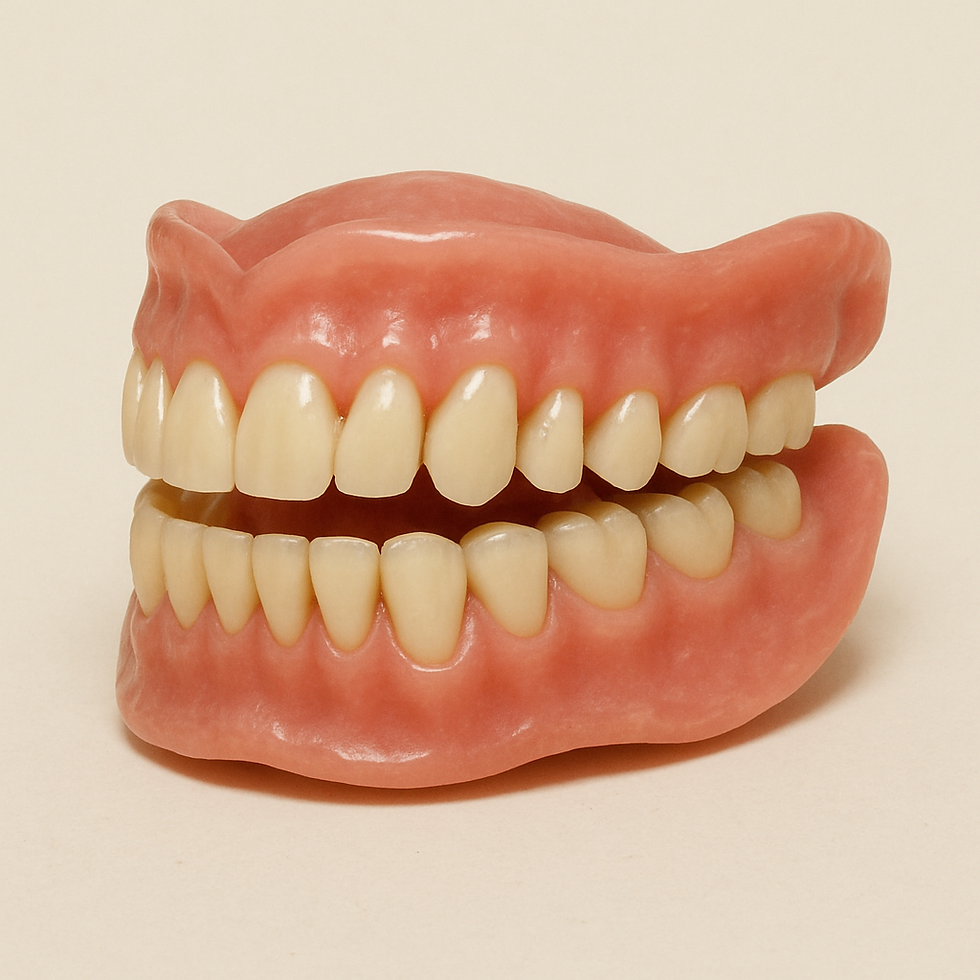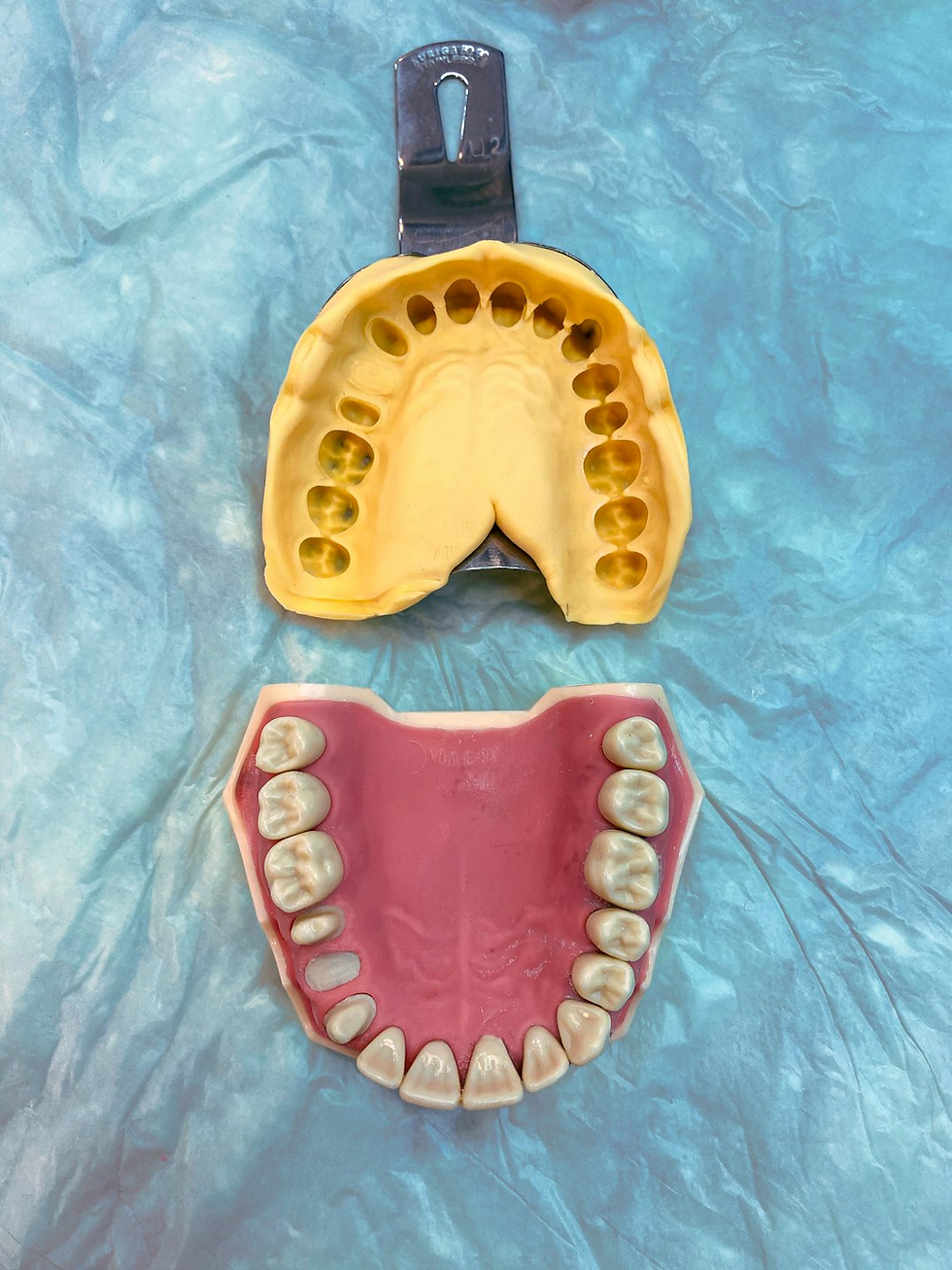Understanding the Benefits of Fake Teeth
- plurefy com
- Aug 19
- 5 min read

Artificial teeth, also referred to as dental prosthetics, serve as substitutes for missing or damaged teeth. These prosthetics can be crafted from various materials, including porcelain, acrylic, or metal. They are designed to replicate the look and function of natural teeth, enabling individuals to eat, speak, and smile confidently.
The Evolution of Dental Prosthetics
Dental prosthetics have significantly advanced since their inception. In ancient times, materials like wood and ivory were used to replace missing teeth. With advancements in dental science, the use of metals and ceramics became prevalent, resulting in the creation of more realistic and durable prosthetics.
Materials Used in Modern Fake Teeth
Today's artificial teeth are made from high-quality materials that improve their durability and appearance. Porcelain, for instance, is favored for its natural look and resistance to stains. Acrylic is lightweight and commonly used for dentures, whereas metals like titanium are chosen for their strength and compatibility with the human body, making them perfect for dental implants.
Functionality and Aesthetics
The main objective of artificial teeth is to restore both functionality and appearance. They enable individuals to chew food correctly, which is essential for digestion and overall health. Additionally, they help maintain the natural shape and fullness of the face, preventing the sunken look that can result from missing teeth.
Types of Fake Teeth
There are various types of artificial teeth available, each tailored to meet different dental requirements. Here’s an overview of some of the most prevalent options:
Dental Implants
Dental implants are among the most effective and long-lasting solutions for replacing missing teeth. A dental implant consists of a metal post surgically inserted into the jawbone, serving as a root for the artificial tooth. Once the implant has fused with the bone, a crown is placed on top, completing the restoration.
The Implant Procedure
The process of obtaining dental implants involves several steps. Initially, the dentist assesses the patient's oral health and takes scans to plan the implant placement. The surgical insertion of the implant is followed by a healing period during which osseointegration occurs, allowing the implant to bond with the bone.
Benefits of Dental Implants
Long-lasting: With proper care, dental implants can last a lifetime.
Natural appearance: Implants look and feel like natural teeth.
Bone preservation: They help maintain jawbone density, preventing bone loss.
Considerations for Implant Candidates
Not everyone qualifies for dental implants. Candidates need sufficient jawbone density and healthy gums. Moreover, maintaining good oral hygiene and attending regular dental check-ups are crucial for the implants' long-term success.
Bridges
A dental bridge is designed to close the space left by one or more missing teeth. It comprises artificial teeth that are secured to adjacent natural teeth or implants. Bridges can be constructed from a range of materials, such as porcelain and metal.
Types of Dental Bridges
Various types of bridges exist, including traditional bridges, cantilever bridges, and Maryland bonded bridges. Each type provides distinct advantages and is selected according to the specific requirements and conditions of the patient.
Advantages of Bridges
Enhancing appearance: Bridges can restore your smile and improve your facial structure.
Improved function: They help you chew and speak properly again.
Permanent solution: Unlike dentures, bridges are fixed and do not need to be removed.
Care and Maintenance of Bridges
Bridges necessitate consistent oral hygiene to prevent decay and gum issues around the supporting teeth. Regular dental check-ups and cleanings are essential to keep the bridge in optimal condition.
Dentures

Dentures are removable substitutes for missing teeth and surrounding tissues. They are available in two primary types: complete and partial. Complete dentures are utilized when all teeth are absent, whereas partial dentures are ideal for those with some remaining natural teeth.
Types of Dentures
Complete dentures replace a full set of teeth, while partial dentures are used when some natural teeth are still present. Immediate dentures can be worn immediately after tooth extraction, whereas conventional dentures are fitted once the gums have healed.
Benefits of Dentures
Affordability: Dentures are often more economical compared to other options.
Non-invasive: They do not require surgery, making them a good option for those unable to undergo implant procedures.
Versatility: Dentures can be easily adjusted or replaced as necessary.
Challenges and Solutions in Using Dentures
Although dentures are a flexible solution, they need to be properly fitted and adjusted to prevent discomfort. Adhesives can enhance stability, and regular dental check-ups ensure that the dentures continue to fit well as the mouth changes over time.
Cosmetic Dentistry: Enhancing Your Smile
Cosmetic dentistry is a branch of dental care dedicated to improving the appearance of your teeth and smile. It includes a wide range of procedures, such as the use of artificial teeth, to address various aesthetic concerns.
Exploring Cosmetic Dentistry Options
Cosmetic dentistry offers numerous procedures beyond artificial teeth, such as teeth whitening, veneers, and bonding. These options are designed to correct discoloration, misalignment, and other aesthetic issues, enhancing the overall appearance of the smile.
Benefits of Cosmetic Dentistry
Improved appearance: Cosmetic procedures can significantly enhance the look of your smile.
Boosted self-confidence: A beautiful smile can increase your self-esteem and confidence in social interactions.
Better oral health: Some cosmetic procedures also improve oral health by addressing issues like misalignment and gaps.
Choosing the Right Cosmetic Procedure
Choosing the right cosmetic dental procedure is influenced by personal needs and objectives. Consulting with an experienced cosmetic dentist can help identify the most suitable approach, taking into account factors such as budget, desired results, and oral health status.
Making the Right Choice
When considering artificial teeth, it's essential to consult a dental professional who can evaluate your oral health and suggest the best solution for your requirements. Elements such as your budget, the condition of your gums and jawbone, and your overall health will influence the most appropriate option.
Evaluating Your Dental Needs
Understanding your specific dental needs is the initial step in choosing the right artificial teeth. A thorough dental examination, including X-rays and scans, helps determine the best prosthetic solution for your condition.
Considerations for Dental Implants
Oral health: Candidates must have healthy gums and enough jawbone to support the implant.
Time commitment: The process can take several months, as it requires time for the implant to integrate with the jawbone.
Cost: Implants tend to be more expensive.
an other options, but their longevity can make them a worthwhile investment.
Considerations for Bridges and Dentures

by Ozkan Guner (https://unsplash.com/@dentistozkanguner)
Dental bridges: Best suited for those with healthy adjacent teeth to support the bridge.
Partial dentures: A suitable choice for individuals with some remaining natural teeth.
Complete dentures: Perfect for people who have lost all their teeth, providing a full-arch restoration.
Budgeting and Financial Planning
Cost is a key consideration when selecting artificial teeth. Looking into dental insurance options, payment plans, and financing can assist in managing the costs related to dental prosthetics.
Maintaining Your Fake Teeth
Proper care and maintenance are crucial to ensure the durability and functionality of your fake teeth. Here are some tips to keep them in excellent condition:
Daily Oral Hygiene Practices
Good oral hygiene is vital for the health of both natural and fake teeth. Regular brushing, flossing, and using antibacterial mouthwash help prevent plaque buildup and gum disease.
Regular Dental Visits
Routine dental check-ups allow for professional cleaning and early detection of any issues with your fake teeth. These visits are essential for ensuring your prosthetics remain in good condition and function properly.
Protecting Your Prosthetics
Being cautious about what you eat and avoiding hard or sticky foods can prevent damage to your fake teeth. Using a nightguard if you grind your teeth can also protect both natural and artificial teeth from wear and tear.
Conclusion
Artificial teeth provide numerous advantages, from enhanced appearance to improved oral functionality. Whether you choose dental implants, bridges, or dentures, understanding your options and consulting with a dental professional will assist you in making the best decision for your smile. With proper care, artificial teeth can offer a beautiful, confident smile for many years.










Comments